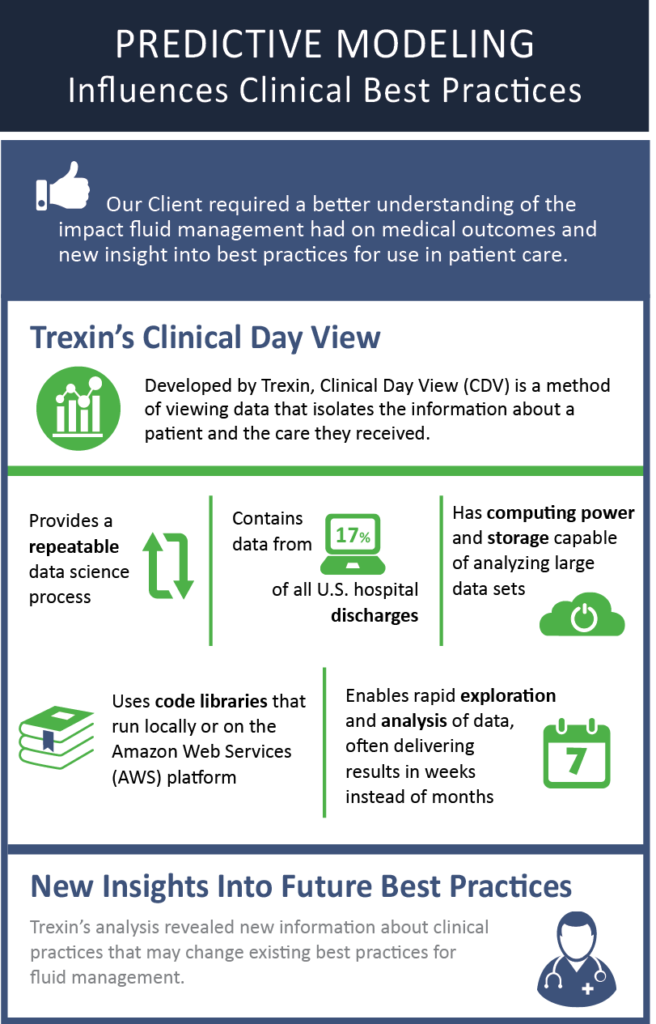Case Study July 19, 2016
Establishing New Clinical Best Practices With Predictive Modeling
Trexin partnered with a medical device company to help them better understand current clinical best practices in fluid management for their hemodynamic monitoring product line.
Business Driver
Our Client, a rapidly growing medical device company, sought a partner to help them better understand the clinical best practices surrounding fluid management for their hemodynamic monitoring product line. The Director of Clinical Operations asked Trexin to collaborate with their physician partners to perform data analyses using commercially available patient data. We were asked to perform analysis on the data to provide insight into the impact of selected variables on medical outcomes, for example the impact of simultaneous presence of two chronic diseases or conditions and the amount of fluids administered on mortality rates, across a range of patient sub-populations. Our goal was to evaluate the risk-adjusted impact of fluid management on health outcomes such as mortality, hospital readmissions, and length of hospital stay.
Approach
We used the Premier hospital discharge database and proprietary enrichments to construct the Clinical Day View (CDV), a Trexin-developed analytic view of a clinical and discharge dataset, built for rapid and flexible exploration. This unique method of viewing data allows us to isolate information about a particular patient and the procedures and treatments that they underwent before being discharged from the hospital. Our CDV is facilitated by code libraries capable of running either on a local system or on the Amazon Web Services (AWS) platform when scalable storage and computing power capable of analyzing arbitrarily large data sets is needed. The larger set of code libraries has been designed to support a repeatable data science process.
The data used to create the CDV was purchased from Premier and contains 17% of all U.S. hospital discharges across a variety of patient populations. The CDV gave us the ability to rapidly explore and analyze this data, providing more usable results without the need to adhere to pre-established research questions. We used the CDV and other proprietary enhancements to quickly perform our analyses, including several predictive models to score patient health status and predict expected mortality and fluid administration, strengthening the power of inferential analyses. We delivered these analyses in a matter of weeks, a process that would normally take months to complete.

Results
Our analysis results revealed new information about specific clinical practices that may change the existing best practices for fluid management. This work is helping our Client prove that giving too much or too little fluid during hospital stays can increase mortality rates in some patients. This insight may significantly change the way doctors manage certain patients and establish new best practices for their treatment.

